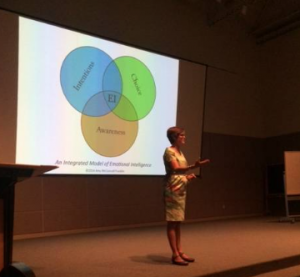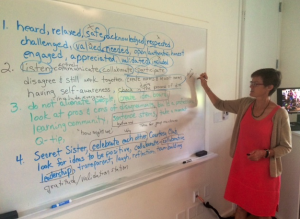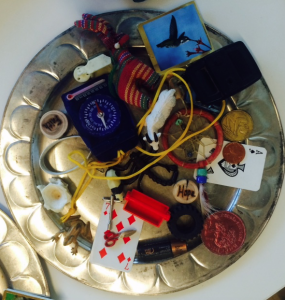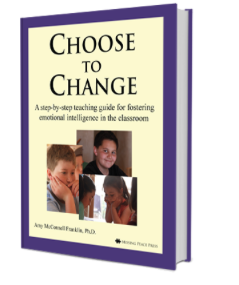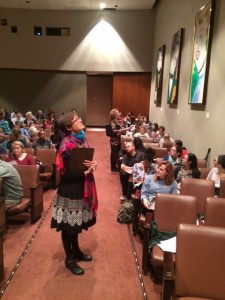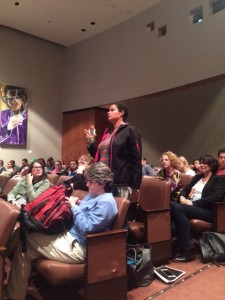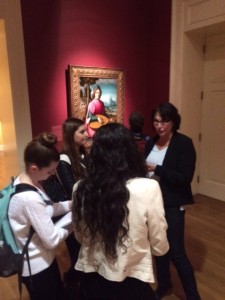Dr. Amy McConnell Franklin
Dr. Franklin is an educator, speaker, changemaker, and author, who has recently partnered with Tulane University, providing her insight, experience, and research on social-emotional learning (SEL), empathy, and emotional intelligence (EI), particularly how we might develop and sustain mutually respectful relationships with our selves, our colleagues, our students, and their students. In the above image, Dr. Franklin explains to our students, faculty, and local educators and community members the connections between essential components of EI, including Awareness (mindfulness, identity), Choice (agency, self-determination), and Intentions (reasons for acting, empathy).
In the summer of 2016, TPCP met with Dr. Franklin to collaborate on our own Communications Charter, which included specific, respectful ways that we would collaborate, communicate, and validate each other throughout the semester, and to learn various strategies for integrating SEL into our own classes, modeling for our students for them to share with their current or future classrooms.
One such strategy is to begin each meeting with a check-in. There are many ways to accomplish this. Students can activate their metaphoric thinking as they consider which tree, vehicle, landscape best describes their current feelings. One tactile, engaging way is to select an object that represents how you’re feeling today. Being in touch with our own emotions is the foundation for SEL.
Click here for Dr. Franklin’s website.
SEL and Arts Integration
Our partnership with Dr. Amy McConnell Franklin continues to blossom. Our faculty spent the day with Dr. Franklin Monday, exploring ways to improve our program and to meet the social and emotional needs of ourselves and of our students. Later, at the New Orleans Museum of Art, Dr. Franklin presented strategies for creating a richer, more nuanced vocabulary to describe our emotions. Students, faculty, educators, and community members joined us to explore works of art in the museum in an engaging emotional literacy activity. We came together as a whole group to discuss how the activity challenged us to integrate new vocabulary. The evening wrapped by composing a quick list of fifteen things for which we are grateful. As Dr. Franklin stated, there’s no faster way to put ourselves in a lighter frame of mind than creating this list.
